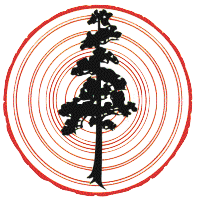ANATOMICAL TYPES OF XYLEM GROWTH-RING BOUNDARIES IN 16 TREE SPECIES FROM A RAINFOREST IN SOUTHERN ECUADOR
This study analyzes wood anatomical properties and growth-ring boundaries in 16 tree species across a tropical humid forest along an altitudinal gradient in southern Ecuador. We extracted 64 wood cores, subjecting them to meticulous microscopic examination and thin section preparation with safranin and astrablue staining for growth-ring identification following IAWA standards. Correspondence analysis linking wood anatomical features and environmental variables revealed a nuanced connection between ecological factors, elevation and microscopic growth-ring distinctiveness. Species at lower altitudes (1000 m a.s.l.) exhibit indistinct growth rings, whereas those at higher altitudes (2000 m a.s.l.) often display distinct growth-ring boundaries with thick-walled latewood fibers. Apart from the deciduous Schefflera morototoni, evergreen tropical rainforest trees dominate at both elevations. This study provides new insights into growth-ring occurrence and anatomy in Ecuadorian tropical mountain rainforest trees, setting the stage for future dendrochronological research. The analysis of microscopic growth-ring features across species, elevations, and locations in the southeastern Andes offers new perspectives on wood structure. In the context of climate change, acquiring high-quality wood anatomical and dendrochronological data is crucial to advance our understanding of how forest trees respond to climate change and to develop adapted conservation and management strategies.ABSTRACT

Transverse wood sections and growth-ring boundaries (indicated by white triangles) of tropical tree species from a tropical rainforest in Ecuador. The larger images (top row) have a scale bar of 500 μm, with two images at 1000 μm, while the smaller images (bottom row) have a scale bar 2000 μm.

Cluster dendrogram of 16 tropical forest tree species representing 13 families from a tropical rainforest in Ecuador.

Heat map showing the individual scores of wood anatomical features of each species based on the IAWA list of microscopic features for hardwood identification (Wheeler et al. 1989).

Cluster dendrogram of 16 tropical forest tree species from a tropical rainforest in Ecuador, grouping them based on wood anatomical features of growth-ring boundaries. The anatomical features referenced are detailed in Table 2, and visual examples of these features can be observed in Figures 1 and 2.

Heat map showing the individual score of wood anatomical features defining growth-ring boundaries of each species. See Table 2 for the description of codes used for anatomical features.
Contributor Notes
